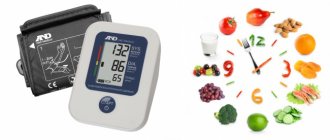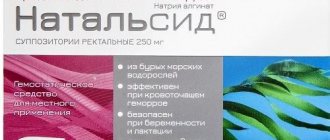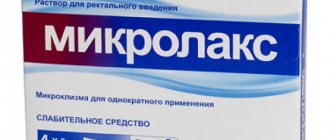A siphon enema is usually performed in a medical facility.
It is used when there is no effect from cleansing, laxative enemas and taking laxatives. Such an enema should be prescribed by the attending physician after a thorough examination and interview of the patient. It is especially important to perform a siphon enema according to the algorithm, since this procedure can lead to complications if the placement technique is violated.
Specifics of this procedure
Siphon enema is outdated and the most traumatic of all existing methods of intestinal cleansing. However, it is still more effective than simple cleansing procedures, especially with prolonged intestinal obstruction. Such an enema is always done in a medical institution and is used when taking laxatives and cleansing enemas is insufficiently effective.
This type of enema is performed as prescribed by a doctor. Before this, the patient must be interviewed and examined. A siphon enema is performed only by adhering to a clear algorithm of actions, since such a procedure causes complications. It is necessary to empty the entire area of the large intestine during such washing. Thanks to a siphon enema, the input and output of water is supplied through the patient’s natural forces.
The procedure allows you to cleanse only the lower part of the large intestine; the liquid is injected and removed forcibly. For cleansing you will need an amount of water equal to two liters.
Cases of using this type of enema
Siphon enemas are prescribed for the treatment of various types of poisoning, with mechanical and dynamic intestinal obstruction (in the first situation, preparation before surgery), with ineffective cleansing of enemas, food intoxication and metabolic disorders. They are used for the analysis and diagnosis of intestinal obstruction. The use of the product if mesenteric vascular embolism or thrombosis is suspected is under no circumstances permitted.
Indications and contraindications for this procedure by specialists
Siphon enema indications are as follows:
- Ineffectiveness of a cleansing enema.
- Severe flatulence.
- Complete absence of mucous, feces, purulent contents and toxins in the intestines.
- Preparatory actions for surgical manipulation of the intestine.
- Possible organ obstruction.
There are also contraindications for siphon enema.
It is not prescribed in the following cases:
- Malignant neoplasm of the rectum.
- Acute process of intestinal inflammation.
- Gastric and intestinal bleeding.
- The rehabilitation period after surgical intervention in the abdominal organs.
- Abdominal pain of unknown origin.
Indications for use
A lot of reasons for carrying out this procedure have been described. First of all, the doctor's permission was obtained. You can’t just do an enema like that – a new difference from a cleansing one. In addition, you need a reason. Prescribing an enema sometimes acts as a preparatory period for further manipulations.
Indications for use are:
- Freeing the intestines from toxic substances in the intestines.
- In case of intestinal obstruction.
- After surgery, difficulty with bowel movements
- Finding a foreign body inside that cannot be removed in any other way.
- Problems that arise after childbirth due to ruptures and trauma to the reproductive organs, which directly affects the functioning of the intestines.
- Internal organic diseases affecting the functioning of the gastrointestinal tract.
- Constipation that lasts a long time, lack of results from the use of laxatives.
- Lack of results after performing other enemas (hypertensive, including), using an Esmarch mug.
- As a therapeutic effect, for example, if the intestine has non-standard bends.
- Need for cleaning before upcoming surgery.
Preparing for the enema procedure
Performing a siphon enema, as a rule, involves preliminary preparation of all the necessary instruments: a sterilized gastric tube connected to a rubber tube through a glass one; tray; petrolatum; 1.5 liter funnel; medical gloves; empty basin or bucket; oilcloth apron; two-liter bucket; oilcloth; rinsing solution (approximately 10 liters).
To rinse the intestines, you will need 10-12 liters of warm water; for one patient, three rinses of two liters each will be enough, while for another, four procedures of three liters each will not be enough. To carry out the procedure, use water heated to standard body temperature. You will also need a catheter tube (1 meter long) and a tip, as well as a cup for pouring out the intestinal contents.
In this case, the patient is placed on a hard couch on his left side. You need to place a diaper under the pelvic area in advance, which will help prevent leakage of intestinal contents.
How much water is needed for an enema?
As a rule, 10-12 liters of water are needed for one procedure, but how much water is needed for an enema may depend on the degree of intestinal blockage . For some, 3-4 washes (2 liters each) are enough, while others will need up to 8 washes.
If for cleansing enemas you take water at room temperature, then for siphon enemas you need water warmer than body temperature - about 40-42 degrees. This is explained by the fact that, given how much enema water needs to be passed through the intestines, if it is colder than body temperature, hypothermia of the internal organs may occur. But if the water is hotter, it can cause burns to the mucous membrane.
Siphon enema technique
In order for the procedure to be carried out without complications, a clear sequence of actions must be followed.
The process of performing a siphon enema begins with the introduction of the required amount of water into the anus, for which a tip lubricated with Vaseline is inserted into the anus, and then the required volume of liquid, up to a liter, is poured into the cup that communicates with it.
After this, the device is raised no higher than a meter above the person, and the water will begin to drain. As soon as the cup is completely empty, you need to lower it below the patient’s pelvis. The container will begin to fill with intestinal contents (feces, stones, etc.). When the container is full, pour all the contents into a bucket. Then water is poured into the intestines again, and then drained.
The procedure described above should be repeated 7 to 15 times. The exact frequency of such repetitions depends on the characteristics of the body and the indications.
When the last bowl of water is empty, it is necessary to place a drainage tube in the bucket, due to which the intestines will be cleared of water and fecal residues.
With a traditional enema, liquid enters the intestinal canal under pressure and flows out during a simple bowel movement. During siphon enema, water does not flow out during bowel movements, being displaced by negative pressure created in the intestinal system.
Features of siphon cleaning
This type of enemas has a great psychological effect on a person. If regular cleansing with a syringe or Esmarch mug takes 20–30 minutes, then siphon rinsing takes 2–2.5 hours.
In addition, the depth of penetration of the rubber tube can cause discomfort to the patient, forcing him to remain in an immobilized position for a long time.
To do this, you need to talk with the patient on an abstract topic, smoothly moving on to the essence of siphon rinsing. It should be explained how the procedure will take place and what effect will be achieved thanks to it. Before washing, it is imperative to isolate the patient from strangers.
The second important point is proper disinfection and sterilization of equipment. So, if it is enough to boil a regular enema in water, then a siphon enema, in particular, its tip must be treated with special antiseptic agents.
Please note that siphon bowel cleansing is now popular in various health centers, especially paid ones.
Since such institutions sometimes act in opposition to traditional medicine, we recommend that you find out, before doing such an enema, what the procedure consists of and what the indications are in your case.
Source: snovazapor.ru
What should you consider during this procedure?
When lavage is completed, it is very important that there is no water left in the intestinal cavity, since it can be absorbed into the mucous membrane and cause water-electrolyte imbalance or intoxication. Therefore, it is imperative to take into account how much water was poured in and how much came out.
During the siphon enema, it is important to monitor the patient’s well-being. If the condition worsens, the procedure must be stopped immediately. In addition, siphon washing should be stopped when the slightest symptoms of blood impurities appear in the excreted waters, if there is no effectiveness or if painful unpleasant discomfort occurs in the abdominal area.
Siphon enema is very dangerous, so this procedure can only be performed by a doctor.
The essence of the method
Siphon washing is carried out using a special installation and mineral water with a low gas content (or just clean water). You must first do a cleansing enema. During one siphon rinse, up to 5 liters of water with a low degree of mineralization are introduced. Removal occurs in stages.
The water temperature should be 40 degrees. The whole procedure is based on the principle of the operation of communicating vessels, where the role of one of them is played by the intestines.
The first sessions last about 30 minutes. Then the duration gradually increases and reaches 2 – 2.5 hours. During this time, several washes are carried out. The course consists of 10 procedures. However, the exact amount is determined by the doctor based on the patient’s health status.
Complications after siphon enema
To assess the seriousness of this procedure, you need to familiarize yourself with the possible complications. Siphon enemas are especially dangerous because the liquid used for lavage can be absorbed into the intestinal walls. Then the amount of circulating blood will suddenly increase, which is fraught with the development of hypertension, hyperedema and disruption of the activity of all intraorganic structures.
The human intestine is normally not able to adequately perceive external influences, so any enema has a negative effect on it. At the end of the siphon enema load, bleeding or intestinal perforation may occur. And the procedure itself is very unpleasant for the patient; it is accompanied by quite unpleasant sensations.
Currently, the use of a siphon enema is possible only in exceptional situations; after such a procedure, patients respond negatively to it. The problem lies not in the effectiveness of siphon intestinal lavage, but in the procedure itself and the sensations that are associated with it.
The procedure as a whole is quite effective, but there are many negative effects during its implementation, which, in turn, causes a negative attitude towards it in patients, and as a result, such an enema is done very rarely. You should always remember that although the technique of performing a siphon enema is not very complicated, this procedure should only be carried out by a qualified specialist.
How often can you give an enema to a newborn?
An enema is a quick way to combat unstable stools when it is necessary to quickly cleanse the intestinal system of toxins, for example, before surgery or a medical examination. Experts do not recommend doing an enema more than twice a year. After all, during the procedure, not only harmful, but also beneficial microorganisms, which are responsible for the normal absorption of nutrients from food, are removed from the body.
There are times when other methods do not help relieve constipation in infants. In this case, you can do this procedure no more than once every three days. So, the interval between procedures should be three days. Only a doctor can allow the procedure to be performed more often according to individual indications.
If a child does not poop without an enema, then his digestive system is accustomed to outside help. In this case, you need to give up any laxatives and be sure to consult a doctor.











